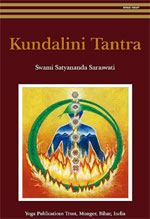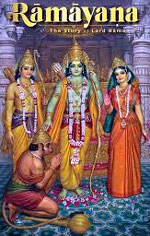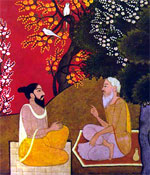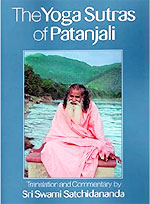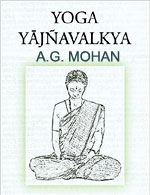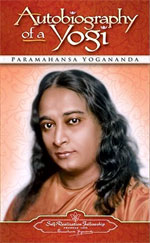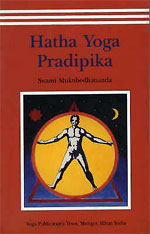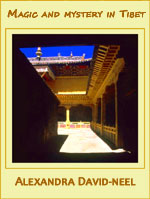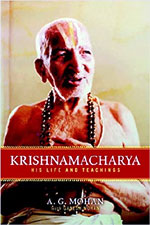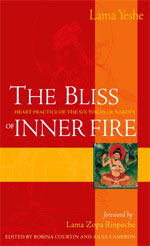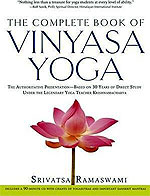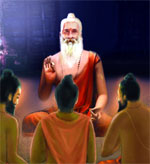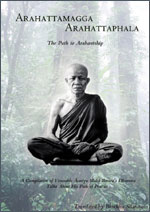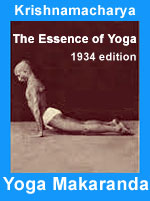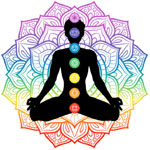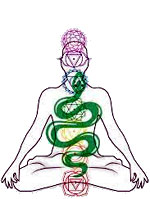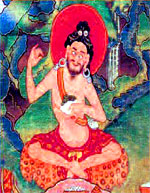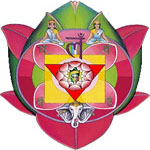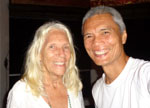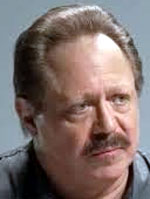

Reading in Progress
Yoga Book Reviews
YOGA Book Reviews
FREE online books
BooksFree.org | Project Gutenberg | Open Library | ManyBooks | Free-eBooks.net | Bookboon | Smashwords | PDFBooksWorld | PDF Drive | Google Books
Kundalini Blogs
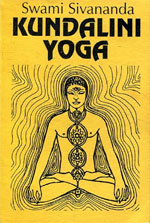 November 1, 2024
November 1, 2024
Kundalini Yoga
Author: Swami Sivananda
ISBN: 81-7052-052-5
Genre: Yoga
Pages: 137 PDF pages
Country: India
Publisher: The Divine Life Society
Publication date: Tenth Edition: 1994
Rating:
![]()
![]()
![]()
![]()
![]() (3 out of 5 stars)
(3 out of 5 stars)
From Hatha Yoga Pradipika to Kundalini Yoga
I have been practicing Kundalini awakening with Hatha Yoga Pradipika through pranayama, kumbhaka, bandha and mudra. Somehow, I've stumbled upon Swami Sivananda's Kundalini Yoga (this book). I'd like to find out the overlaps and new things I can glean from this book. My practice in the past many years has been focused on Siddhi-Activation through Kundalini awakening. I'm curious how this book can supplement my current practice of Kundalini awakening.
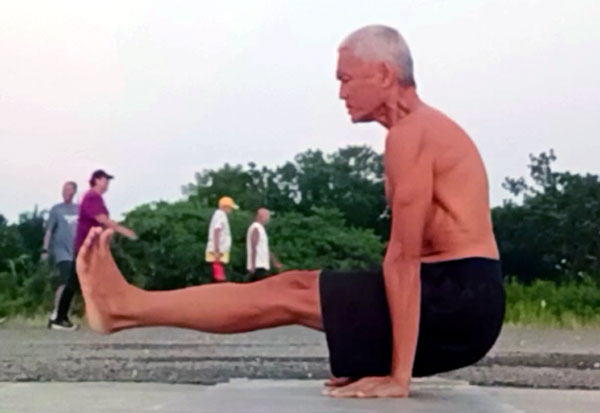
Asking A.I.
Unlike most yoga books written in Sanskrit where the author usually presents a translation and follows it up with a commentary (since the translation alone could be cryptic), this book only provides the translation of the verses. As can be expected, it is too pithy and concise to be a 'call to action'. To make this book usuable, I asked AI (Gemini, ChatGPT, Bing or Aria) for a deeper and lucid explanation of the translation.
THE BOOK
Introduction: Essence of Kundalini Yoga
Kundalini
Kundalini is the coiled up energy that lies dormant within our Muladhara chakra (the root energy hub at the base of the spine). When it awakens, it takes its journey through the central Sushumna nadi, passing along the other major chakras, all the way to the most powerful chakra on the top of the head, the Sahasrara chakra.
The Kundalini is a coiled-up, dormant and cosmic energy that pervades our physical entirety. This book translates that energy into a practice to awaken this dormant energy. It explains the theory and illustrates the actual practice. To the spiritual aspirant, this will provide a hand-holding guide through this obscure and less-travailed aspect of yoga.
The Guru
The Guru's Divine Vision to see the underlying unity (static and dynamic) of all existence. The guru has shown the path to liberation, which is the ultimate goal of spiritual practice. The seeker expresses deep reverence and gratitude to the guru for revealing this path. The verse emphasizes the transformative power of the guru's teachings and the importance of seeking guidance from a qualified teacher.
The Guru's knowledge, wisdom and guidance. The Guru possesses profound wisdom and spiritual authority whose teachings are pure and enlightening. The Guru is capable of bestowing both material and spiritual blessings - physical well-being, success, and happiness, and the realization of one's true nature and liberation from the cycle of birth and death. The verse praises the Guru as the source of all knowledge and liberation, and emphasizes the importance of seeking guidance from a qualified spiritual teacher. The Guru has a deep, unwavering foundation in spiritual knowledge and possesses great spiritual power. This power could be understood as the ability to inspire, guide, and transform the lives of disciples.
The Guru grants both worldly prosperity and liberation: This highlights the Guru's ability to bless disciples with both material success (worldly prosperity) and spiritual liberation (moksha). It signifies that true guidance from a Guru can lead to a balanced and fulfilling life, encompassing both material and spiritual well-being.
So, this passage pays homage to the Guru, acknowledging the profound influence a true teacher can have in guiding their disciples toward a prosperous life and ultimate spiritual freedom. It's a celebration of the Guru's role in providing both temporal and eternal benefits.
Need for a Guru
You will be highly benefited by the spiritual magnetic aura of your
Guru. In Kundalini Yoga you will have to break up the Granthis and take the Kundalini from Chakra to Chakra - you need the help of a Guru. Early in the practice, you can learn from books and meditate on your own. As you progress, you will feel the need for a guru. When you hit a snag in your practice, you feel the need for a guru. The guru can exponentially enhance your practice (In Autobiography of a Yogi, it showed how nearly impossible it was for Paramahansa to achieve what he did without his guru, Yukteshwar Giri). The guru alrealy knows the pitfalls and can guide you through.
Who is a Guru?
Guru, Truth, Brahman, Ishvara, Atman, God, Om are all one. A guru is one who has transcended the usual pitfall of man and is now illuminated (but not arahant or enlightened). Real gurus are always open to the right disciple - it's their duty. Being with a guru is already illuminating. A guru can awaken kundalini by an aspirant by sight, touch, and speech. He can transmit by thought. A guru will test his students. Once, Goraknath asked his students to climb up a tree and jump down head first. All stood in place while one climbed up and plunged down. He was miraculously caught and rewarded self-realization immediately. It is still debated by the intellectuals that self-realization can be reached without a guru (yes, but having a guru will cut down the time significantly). Every discipline needs a guru - a chefs goes for apprenticeship, a lawyer seeks a mentor. Why not yoga? It's just faster to learn with guidance from someone who has already gone through what you are going through.
Spiritual Power
The guru transmits his power to his disciple. The disciple feels it from the Muladhara rising to the top of his head. The disciple is transformed. This is not the end but a start of a new chapter. The disciple must further perfection and attainment.
OM
The verse is about the power of the sacred sound Om, the primordial sound of the universe. By chanting Om, one can manifest their material and spiritual desires like enlightenment or liberation. The power of Om can bring abundance and prosperity to those who deeply connect with it. The ultimate goal of spiritual practice is liberation or enlightenment (freedom from the cycle of birth and death). By meditating on Om, one can attain this highest state of consciousness. In essence, the verse suggests that the sound of Om is the source of all creation and the key to spiritual liberation. By meditating on this sacred sound, one can attain both material and spiritual fulfillment. The verse encourages reverence for Om, promising both worldly fulfillment and spiritual liberation through dedicated meditation on this sacred sound. It's a profound reminder of the power and significance of Om in spiritual practice.
Divine Feminine
The verse is a beautiful homage to the Divine Feminine, often represented with the three states of physical, astral, and causal.
Tripura Sundar is the consort of Shiva, often depicted with three eyes. Together, they represent the divine masculine and feminine energies. Tripura Sundari is seen as the divine energy that resides within these six chakras, or energy centers, within the human body.
The Goddess is constantly present in the hearts of those who have attained spiritual perfection. Seeking refuge in her signifies turning to her for protection, guidance, and spiritual support.
In essence, this verse celebrates the supreme power and beauty of the Divine Feminine, and seeks her blessings for spiritual liberation.Overall, this passage is a devotional invocation to Tripurasundari, celebrating her divine attributes, beauty, and presence in both the natural world and the spiritual practices of yogis. It's a poetic expression of reverence and admiration for the goddess.
Consciousness
This verse directly addresses Consciousness, the ultimate reality which is the underlying essence of all beings and things. Consciousness is present in every time and place, the source of all causation and effect. It is the ultimate power that drives the universe. Words are inadequate to describe Consciousness. Essentially, the verse is a contemplation on the nature of Consciousness which encompasses reality and the divine. It acknowledges the limitations of human language and intellect in comprehending the infinite.
Consciousness is the core of all existence. Consciousness is both the cause (the origin or reason for existence) and the effect (the result or outcome of all things). It signifies that Consciousness encompasses all aspects of the universe, both the initiator and the product of creation. Consciousness is the force or energy that drives everything. It's the underlying power that sustains and moves the universe. In essence, this passage is a deep meditation on the nature of Consciousness, recognizing its presence in all things and the profound difficulty of expressing its true greatness through words. It's a humble acknowledgment of Consciousness' omnipresence, omnipotence, and immeasurable nature.
Maya
The ultimate knowledge or wisdom is beyond the reach of ordinary understanding. Maya is the illusory nature of the material world. It is the power that creates the illusion of individuality and separation. Intellect, memory, and delusion are mental faculties that are often seen as separate from the Self, but they are all manifestations of the ultimate reality. The extraordinary powers and abilities possessed by divine and demonic beings are ultimately rooted in the divine. The unity of all existence and the divine nature of everything is the ultimate reality, beyond the duality of good and evil, knowledge and ignorance.
Forgiveness
This is a prayer seeking divine forgiveness from Shiva, one of the primary deities in Hinduism, who is often associated with destruction and transformation. This expresses deep humility and a profound belief in the divine's capacity to forgive for all sins physical (actions, speech or thoughts), for all times (past and present), both intentional and unintentional. It acknowledges the divine as the ultimate source of mercy and compassion. It is a prayer for spiritual purification and liberation from the cycle of karma.
4 Stages of Sound
- Para - at Muladhara Chakra. This is the transcendental level of sound, the unmanifested source of all sound. It is the divine sound vibration, the primal sound from which all other sounds emerge. This is not physically audible or even thought of...it just exists. This sound is manifested in Prana (energy) and this is the highest manifestation of divine sound energy.
- Pasyanti - at the navel, Manipuraka. This is the subtle level of sound, beyond the reach of the senses. It is the seed form of words and thoughts, the mental blueprint of speech. This is manifested in the mind when you think of the sound/thought. This is the intermediate level of sound, where words begin to take shape in the mind. It is the stage of conceptualization and articulation.
- Madhyama - at the heart, Anahata. Madhyama is the intermediate unexpressed state of sound. Its seat is the heart. This is manifested by the sensory perception organs. Any individual of any country will make the same gesture by holding his hand to his mouth in a particular manner, when he is thirsty. As one and the same power or Shakti working through the ears becomes hearing, through the eyes becomes seeing and so forth
- Vaikhari - at the throat and mouth, Vishuddhi. This is the gross level of sound, the spoken word. It is the physical manifestation of sound, the audible expression of thoughts and ideas. This is the grossest expression of divine sound energy.
The Divine, or the Supreme Being, is the source of all sound, from the most subtle to the most gross. It emphasizes the interconnectedness of all things, from the spiritual to the material. By understanding the nature of sound and its various levels, one can gain deeper insights into the nature of reality and consciousness.
Preface
The Kundalini shakti, shaped like a coiled serpent, has taken many names (Shiva, Durga, Lakshimi) and many forms (electricity, magneticism, energy, gravity, etc.) and has lied dormant in man. When it awakens, it enters the Sushumna Nadi and pierces through the chakras until it reaches the Sahasrara chakra to merge with Shiva. This is known as Kundalini Yoga or Laya Yoga.
Man wants happiness and to attain this, he has to realize the Atman within himself. He has to go deep within himself. A man using his cognitive abilities realizes God-consciousness. A man who simply sleeps and drinks is nothing but a brute. To reach God-consciousness, one has to awaken Kundalini, do Sadhana, reach the sleepless-sleep, and reach samadhi.
Man is sentient and he alone has cognitive abilities. His mind-space is the Chitta. This is like a lake that should ideally be placid so the yogi becomes at peace and equanimous. But the lake has little ripples - these are Vrittis or fluctuations of the mind. It shifts, it thinks various thoughts one after the other and these powerful fluctuations cause a yogi to react to it, disrupting his peace. Ideally, the Vrittis should be eliminated or minimized so that the Chitta is once again placid and the yogi experiences pure consciousness or Purusha. Happiness then can be achieved through control of the mind - it has nothing to do with wealth, fame or power. So ultimately, yoga is mastery of the mind.
Chitta
Chitta is often translated as mind-stuff, consciousness, or the field of the mind. Chitta acts as a repository of all mental impressions, memories, and latent tendencies (samskaras). It is the medium through which we perceive and interact with the world. It refers to the totality of the mental structure, encompassing:
- Manas - The mind, which processes sensory input.
- Buddhi - The intellect, responsible for decision-making and discrimination.
- Ahamkara - The ego or the sense of "I-ness."
Role in Yoga:
The goal of yoga is to calm and purify the chitta so it can reflect the pure consciousness (Purusha) without distortion.
NOTE: In some books, it is said that Chitta is eternal - never dies and never gets born - it has always been in existence. When we die, our bodies deteriorate but the Chitta continues to live on. This is not the same Chitta as above. The one above is better regarded as Prakriti - the material world. Terms can be confusing especially when you merge the thinking of one yoga philosophy and another. The eternal Chitta can best be described as Purusha - pure Consciousness. So henceforth, "Chitta" (Prakriti) is only the mind landscape and "Consciousness" (Purusha) is the one that is eternal and unbound. In the yoga of duality, these 2 are the main characters.
Vritti
Vritti is commonly regarded as the fluctuation, modification or movement of the Chitta. These are the mental waves arising from external stimuli, internal thoughts and impressions. Think of Chitta as the lake and Vritti as the ripples. The more ripples, the less clear the lake is, the more mental clutter/noise we experience. There are many types of Vrittis (painful and non-painful):
- Pramana: Correct knowledg
- Viparyaya: Misconception or false knowledge
- Vikalpa: Imagination or fantasy
- Nidra: Sleep or absence of awareness
- Smriti: Memory
Role in Yoga:
In the practice of yoga, the vrittis are reduced and ultimately eliminated. When there are no more mental fluctuations (causing anger, anxiety, worry, etc.), the Chitta is once again placid and the yogi experiences pure consciousness - Purusha.
Samadhi
One can do the shatkriyas, asana and mudra but these are just stepping stones to Dharana and ultimately, Samadhi. Samadhi is the end goal - not asana (yoga studios nowadays simply focus of asana and nothing more). There are 2 different levels to Samadhi:
- Jada - Jada is a sign of early enlightenment (but not complete and not ideal) where the yogi is fully immersed in meditative absorption while his body is catatonic (motionless and inactive). The yogi unites with the divine but he does not interact and cannot function in the real world. This usually happens when Kundalini shoots up to the Sahasrara without being assimilated first with the lower chakras. This is similar to Nirvikalpa Samadhi where duality and mental activities dissolve but there is no integration of this realization with the waking state.
e.g. Ramana Maharshi was in deep state of Samadhi completely oblivious that his body was already being devoured by insects. When he came out of it, he already had a permanent disability. - Chaitanya - Chaitanya is the highest state of Samadhi. It is dynamic where the yogi is united with the divine but remain fully interactive with the real world while being deeply rooted in spiritual bliss. This means Kundalini flows freely after assimilating itself with all the chakras. This is similar to Sahaja Samadhi where the yogi is permanently established in self-realization (doesn't revert back to his old self).
(e.g. Jesus Christ, Buddha)
Other Versions of Samadhi (Yoga Sutras):
There are many versions to levels of Samadhi - not just the above. In the Sutras of Patanjali, he talked about varying levels of Samadhi as follows:
- Savikalpa Samadhi - (with distinctions) Savikalpa Samadhi comes with Cognitive Awareness.
This is the initial phase of Samadhi, where there is still an awareness of the object of meditation, distinctions, and duality. It is further divided into four subtypes based on the focus and depth of absorption:
- Savitarka - The mind is absorbed in a gross object (e.g., a physical object, mantra, or deity). Thought processes and reasoning are present but directed solely at the object.
Example: Meditating on a flame or an idol while still being aware of its shape, form, and meaning. - Savichara - The focus shifts to subtle objects, such as concepts, energies, or abstract forms. Thought is more refined but still active.
Example: The practitioner may meditate on formless qualities like light, sound, or the subtle essence of an object. - Sananda - Blissful Awareness becomes predominant. The practitioner experiences joy that arises from the serenity and depth of meditation, often transcending external objects. This bliss is still tied to subtle aspects of the mind, not the ultimate self.
- Sasmita - I-Am Awareness. The focus is on the sense of individual being or ego-awareness (asmita). There is an awareness of the "I," but it is purified and free from distractions or attachments.
- Savitarka - The mind is absorbed in a gross object (e.g., a physical object, mantra, or deity). Thought processes and reasoning are present but directed solely at the object.
- Nirvikalpa Samadhi - (without distinctions) Nirvikalpa is Samadhi without Cognitive Awareness (aka Asamprajnata Samadhi). This is a state where all distinctions, dualities, and mental activities cease. The sensory perceptions and the thinking and intellect all disappear. The mind dissolves completely, and only pure consciousness remains. The yogi is now in Atman. Key Features:
- No mental fluctuation (vrittis) or thoughts exist
- The practitioner is completely absorbed in Purusha (pure consciousness) and transcends the realm of the mind and senses
- This is the state of ultimate liberation (Kaivalya). It is described as indescribable, infinite, and beyond time and space
- Sahaja Samadhi - (Natural Samadhi) Although not explicitly discussed in the Yoga Sutras, later traditions mention Sahaja Samadhi, a state of effortless absorption where the practitioner is permanently established in the realization of the self, even during daily activities. It is the integration of Nirvikalpa Samadhi into life.
Progression Through Samadhi
The progression from Savitarka to Nirvikalpa Samadhi is not necessarily linear; it depends on the practitioner’s practice, inner tendencies, and level of spiritual evolution. Each level requires increasing mastery over the chitta vrittis (mental fluctuations) and greater subtlety in awareness.
Siddhis
Siddhis are supernatural powers that lie dormant in all of us. They are naturally acquired when practicing Yoga. It is best regarded as a hindrance to self-realization and must be ignored (I disagree).
As the yogi proceeds on the path, he should be wary about the pitfalls - fame, wealth, power, attachment to family, things, memories, and siddhis.
When Kundalini reaches Sahasrara and unites with Shiva (energy uniting with consciousness), the goal is achieved - perfect Samadhi ensues. The yogi drinks the nectar of immortality (bindu, ambrosia)
Prayer to Mother Kundalini
This passage is a poetic and devotional invocation from the tradition of Kundalini Yoga, addressing the dormant Kundalini Shakti, the divine feminine energy residing at the base of the spine in the Muladhara chakra (root chakra). It expresses the aspirant's plea to awaken this energy and guide it upward along the Sushumna Nadi through the chakras, culminating in union with Shiva, the supreme consciousness, at the Sahasrara chakra (crown chakra). This frees the yogi from all the suffering of worldly existence. The awakening of Kundalini leads to the realization of Brahman and the experience of unbounded bliss and liberation (moksha).
Experiences on Awakening of Kundalini
You know Kundalini has awakened during meditation when:
- you hear Nada sound
- Muladhara chakra throbs
- you feel divinity from your 5 senses
- you receive instructions from God (when I specifically meditate for Aha moments, they come)
- your hair stands on its roots
- Mula bandha, Jalandhara bandha and Uddiyana bandha involuntarily happen
- you feel prana rising from the spine
- breath spontaneously stops (Kevala kumbhaka)
- you experience bliss
- you spontaneously chant OM
- the mind becomes blank
- Sambhavi mudra spontaneously happens
- you feel vibrations of Prana in different parts of the body (I had this during prolonged breath-holds)
- you experience jolts of electricity within your body
- you no longer feel the gross solidity of your body
- it's hard to open your eyelids
- you feel light as air
- energy is inexhaustible (I felt this and called it the Superman Effect)
- you get divine intoxication (I had this and called it a fleeting moment of enlightenment)
- you develop power of oration (I've been experiencing this in the last so many years)
Gradual Ascent of the MindIt's not just Kundalini at the Muladhara where shakti (power/energy) resides. All chakras are energy hubs and shakti lies within them - some partly awake, partly dormant. Chakras are esoteric and leave the body when the person dies.
Controlling your emotions (anger, jealousy, etc) lead to purity of mind. As the mind is purified (from anger to compassion), it ascends the hierarchy of the chakras for higher evolution.
The mind of a worldly man moves within the confines of Muladhara and Svadisthana chakras. As the mind is purified, it goes up the Manipuraka chakra where it experiences joy and power. More purification and the mind reaches Anahata chakra, the heart center where it experiences bliss. Further purification and the mind moves to Vishuddhi chakra (throat) for more bliss and power. At this point, the mind can still go down to the lower chakras. Further up and the mind reaches Ajna chakra where Samadhi ensues and the yogi realizes Atman. When the mind reaches Sahasrara chakra at the crown of the head, the yogi experiences Nirvikalpa Samadhi where duality, longing and mental fluctuations disappear. Here, Kundalini unites with Shiva.
Nadi Shodan Pranayama 1:4:2 ratio for Awakening Kundalini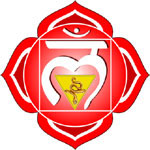 Concentration should be focused on the Muladhara chakra at the base of the spine where Kundalini resides. Imagine the shape, color and form. Use a metronome so you can focus on the Muladhara instead of the counting. Inhale on the left for 1 count (imagine and FEEL drawing prana from the outside), hold for 4 counts (imagine funneling the prana from the nose to the spine, down to the Muladhara chakra and awakening the Kundalini), exhale on the right for 2 counts. Inhale right and repeat the same process, visualization and feel. Do this 3X in the morning and 3X at night. Kundalini will awaken much faster.
Concentration should be focused on the Muladhara chakra at the base of the spine where Kundalini resides. Imagine the shape, color and form. Use a metronome so you can focus on the Muladhara instead of the counting. Inhale on the left for 1 count (imagine and FEEL drawing prana from the outside), hold for 4 counts (imagine funneling the prana from the nose to the spine, down to the Muladhara chakra and awakening the Kundalini), exhale on the right for 2 counts. Inhale right and repeat the same process, visualization and feel. Do this 3X in the morning and 3X at night. Kundalini will awaken much faster.
My practice is more advanced. I do Ujjayi Breathing using 1:4:2:3 ratio with antara kumbhaka + Maha Bandha Mudra on the inhale and bahya kumbhaka + Maha Bandha Mudra on the exhale using a metronome. It's very hard to do Nadi Shodan here before it gets confusing which nostril to use when I get spacey. I do 10 minutes of this followed by 10 minutes of Nadi shodan, but no breah-holds...just slow breathing.
Kundalini Pranayama
In this pranayama, Bhavana (cultivating a feeling and mental attitude) is more important than the ratio, breathing or breath-hold. Sit in Siddhasana or Padmasana facing East or North. Inhale slowly and steady, not making a sound, and imagine Kundalini awakening and rising up from chakra to chakra until it reaches Sahasrara - this should be the end of the inhalation. Hold. Cultivate Bhavana of Kundalini uniting with Shiva and your whole being is pervaded by light, power and wisdom. Slowly exhale, imagining that Kundalini is slowly getting back to Muladhara, chakra by chakra. Repeat the process. This is a very fast way to awaken Kundaliini.
Kundalini
All forms of mantra, japa, meditation, pursuit of virtues, lead to the awakening of the Kundalini. Worldly people with no spiritual pursuits will have their Kundalini dormant - the environment is dirty and there is no trigger for any kind of energy awakening. To the yogi whose kundalini has awakened, there emanates layers of planes of existence, new worlds with amazing wonders open up, he acquires divine knowledge, power and bliss. The chakras reveal their divine secrets (siddhis), As the awakened Kundalini ascend from one chakra to another higher, the yogi is elevated one rung higher in his spiritual path. When he reaches Sahasrara, he blends into the eternal cosmos and loses his sense of separation. From simple yogi, he is transformed into an illuminated sage. He becomes a jivamukta (liberated but still alive) who has crossed the ocean of ignorance. Even celestial beings celebrate his accomplishment.
Yoga is Union
Yoga means union - uniting man with the divine. This is not easy. Man thinks he is separate from everything else - this illusion is almost an unbreakable bond. The one thing that can free him from this delusion and see the ultimate truth is Yoga. But yoga is not for everyone who simply wishes to do the practice. To even consider yoga, it means a seed has been planted even from previous lifetimes and this seed has somehow germinated for the person to even be motivated to practice yoga in the present time. To perform yoga in higher form means the yogi has already been proficient in previous lives.
Kundalini and Tantric Sadhana
Kundalini Yoga falls under the umbrella of Tantric Sadhana. The divine female shakti residing in the Muladhara chakra lies dormant and the methods of Kundalini Yoga are designed to wake her up from her slumber to unite with Shiva (consciousness) at the Sahasrara chakra.
Kundalini and Hatha Yoga
Hatha Yoga has a different method of awakening Kundalini compared to Tantric Sadhana. Hatha Yoga employs asana, pranayama, shatkriya, and controling prana through mudra, bandha and kumbhaka (no Yama and Niyama). In the process, Kundalini is also awakened and begins its path towards Sahasrara (this has been my practice for years now, largely based on Hatha Yoga Pradipika. I've also done the Tantric method but the intense visualization is too difficult).
Kundalini and Raja Yoga
Raja Yoga makes no mention of Kundalini awakening, but talks about the 8 limbs of yoga, the 4 of which are all focused on mental sharpness through meditation. It focuses on the Yama and Niyama, something not accepted by the Nath Yogis in Hatha Yoga. Whereas Hatha Yoga is mechanical, Raja Yoga is more on the perfection of the mind (Samkaya for Dharana, Dhyana and Samadhi). Even with no mention of Kundalini, the protocols of Raja Yoga ultimately awakens Kundalini.
Kundalini and Vedanta
Vedanta does not concern itself with asana, pranayama or Kundalini. The end-all and be-all of Vedanta is for the yogi to cross the ocean of ignorance to discover his true self - that he is divinity and not separate from anything or anyone. The yogi simply forgets this fact. But through meditation, he is brought back into the fold.
Kundalini Yoga and Vedanta both share the same goal which is Moksha - spiritual liberation but differ in their approaches. In Kundalini Yoga, when Kundalini rises and reaches Sahasrara (through Shatkriya, pranayama, kumbhaka, mudra, bandha), Moksha is attained. In Vedanta, Moksha is arrived at through Jnana (self-inquiry, knowledge of scripturess, intellectual rigor and meditative practice) when the yogi realizes that he and Brahman are the same.
Vedanta can be complimentary. When Kundalini is awakened, Vedanta can enhance the yogi's deeper understanding of non-duality.
Flavors of Kundalini Yoga (according to ChatGPT)
There are many flavors of Kundalini Yoga from different schools with a wide range of varying practices. Teachers like Yogi Bhajan, Swami Sivananda, Sri Swami Satyananda Saraswati and Gopi Krishna have played significant roles in shaping Kundalini Yoga's evolution and global reach.
- Hatha Yoga - this is rooted in ancient texts like the Upanishads, Tantras, and Hatha Yoga Pradipika. It awakens Kundalini through the use of Asana, Pranayama, Bandha, Kumbhaka and Mudra. This is taught by the Nath Yogis (Hatha Yoga Pradipika) and the Swami Sivananda lineage (this book).
I teach this type of Kundalini Yoga but I don't call it by that name. I audatiously call my class a "Siddhi Activation Class". It would seem confusing to call it Kundalini Yoga (even though its sole intention is to awaken Kundalini) simply because it would be confusing - the more popular "Kundalini Yoga" is different and it is taught by Yogi Bhajan, below. - Kundalini Yoga of Yogi Bhajan - this is the yoga popularized in the West. When you attend a Kundalini class in a yoga studio, chances are, this is the type of yoga used. I have attended a few Kundalini Yoga classes in this tradition. It consists mainly of seated poses with deep and repeated breaths synchcronized with body movement.
- Kundalini Meditation (Vipassana-inspired Kundalini Work): - this is more meditative mostly in seated poses, no heavy breathing, but visualizing Kundalini awakening from the root chakra and rising along the Sushumna Nadi, activating the other chakras along the way, until Kundalini reaches Sahasrara chakra where energy united with consciousness and the reality is revealed for what it really is (note: in practice, this is more like what this book is teaching).
- Tantric Kundalini Yoga (Tummo Yoga) - from Tantric traditions (Tibetan Yantra Yoga), focusing on visualization and breath-holds and chakra activation.
I've read this book, The Bliss of Inner Fire: Heart Practice of the Six Yogas of Naropa by Lama Thubten Yeshe (1935–1984) which is a Tibetan approach to Kundalini awakening. Tibetans are more extreme in their penitence and abstinence. While reading the book, which took many months, I've taken the practice of Yummo Yoga. Essentially, Tummo and Hatha have more similarities than differences. My preference is the Hatha Yoga way of Kundalini awakening.
Forms of Yoga
- Mantra Yoga - Kriya or Bhava
- Hatha Yoga -
- Laya Yoga - Kundalini Yoga is really Laya Yoga. The Samadhi of Laya Yoga is said to be Savikalpa Samadhi (imperfect)
- Raja Yoga - Samadi of Raja Yoga is said to be Nirvikalpa Samadhi (perfect)
- Jnana Yoga -
- Ashtanga Yoga - 8-limbed Yoga, contains five of the 7 Sadhanas (Asana, Pranayama, Pratyahara, Dhyana and Samadhi) and three others - Yama, Niyama and Dharana
Sadhanas (Limbs) of Yoga
- Sat-Karma (Shatkriya) - purification processes, cleansing of the body
- Asana - physical postures
- Mudra - energy locks
- Pratyahara - shutting the doors to the outside world, abstraction of the senses from their objects
- Pranayama - breath regulation
- Dhyana - meditation
- Samadhi - union of man and the divine, ecstasy, imperfect (Savikalpa) and perfect (Nirvikalpa)
As Above, so Below
Man is a microcosm of the universe. What is outside also happens inside. By looking within, he sees the totality of the universe and how it works. But the atom is also the microcosm of man. An atom needs static (nucleus) and dynamic energy (electron) to keep its balance. Man also has static (Kundalini) and dynamic energy (prana) to sustain existence. The solar system also has a static energy (sun) and its dynamic energy (orbiting planets). Even in the stock market graphs the same rule applies - the graph in the seconds of trading for the scalper trader is the same as the long-term graph of the fundamentalist trader. As above, so below. The principles remain the same.
Chakras (energy centers)
The Chakras are centres of Sakti as vital force. They disappear upon death of the person. Chakras are characterized by different number of petals - these are the connecting nadis in the chakra. 4 petals on the Muladhara means 4 nadis branching out of the Muladhara.
- Muladhara - Prithvi, root-support situated at the base of the spinal column in a position midway in the perineum between the root of the genitals and the anus
- Svadhishthana - genitals, Apah
- Manipura - abdomen, Agni
- Anahata - heart, chest, Vayu
- Visuddha - throat, Akasa
- Ajna - in the forehead between the two eyes
- Lalana -
- Manas -
- Soma -
- Sahasrara - the abode of Shiva (consciousness)
5 Elements in Nature and Hand-Mudra
There are 5 elements of nature that also exist in our bodies. Our fingers represent the virtues of these elements. When we get sick, it means the energies are not balanced and we can combine our fingers in unique ways (mudra) to restore balance and health.
- Agni - fire, Manipura, thumb, RAM mantra
- Vayu - air, Anahata, index finger, YAM mantra
- Akasa - ether, Visuddha, middle finger, HAM mantra
- Prithvi - earth, Muladhara, ring finger, LAM mantra
- Apah - water, Svadhishthana, little finger, VAM mantra
2 Forms of Shakti
Shakti (energy) comes in 2 forms - dormant/static which is the Kundalini shakti and the dynamic which is the familiar prana that keeps us alive and sustains our existence - one cannot exist without the other. Kundalini, although dormant, acts as support to dynamic prana. Kundalini Yoga merges these two because the true essence of reality is but one - no duality.
As the dormant/static Kundalini shakti is awakened at the Muladhara chakra, it becomes dynamic and ascends towards Sahasrara. The union of Shiva and Shakti spells man merging with universal consciousness and becomes one. Samadhi ensues and the mind transcends its human limitations - the external world dissolves and the unchanging reality emanates. The human body is still there, functioning like before, but the mind and perception of reality is no longer the same.
While Kundalini remains static in Muladhara, the body cells also have static energies within them. When Kundalini awakens and merges with Shiva, their union produces Amrita, the nectar of immortality. It flows throughout the body and activates the static energies within the cells for increased performance (siddhis pervading the entire body?).
When Kundalini awakens and ascends to Sahasrara, it is never depleted. The awakening is partial conversion and not complete. There is always static Kundalini left. If the conversion was complete and not partial, then the physical, subtle and causal bodies dissolve leaving a bodiless liberation.
Chapter 1: Prelimenary
Foundation - Vairagya (detachment, dispassion, renunciation)
Man follows the 'template' for success - titles, prestige, wealth and power. Achieving this, he still feels miserable. Why? Realizing the true Self is the only reason for this human existence. Having a daily Sadhana (devoted spiritual practice) ultimately leads to discovering the true Self. With proper Sadhana, you discover your divine heritage - happiness, peace, oneness, courage, power, strength, wisdom and joy.
What is Yoga?
Yoga is union between the Self and the Divine. This is done when the mind is mastered. Mastery of the mind can come about through Abhyasa (repetitive practice of yoga over a long period of time) and Vairagya (renunciation, dispassion, contentment). Yoga disentangles the yogi from the phenomenal world of sense objects and into pure bliss. Kundalini must be awakened first before any Samadhi takes place.
Importance of Kundalini Yoga
When Shakti (energy) unites with Shiva (consciousness), Samadhi ensues. There are many types of yoga giving rise to Kundalini awakening - Jnana Yoga, Bhakti Yoga, Raja Yoga, Hatha Yoga, etc. But Kundalini Yoga is the most comprehensive and most transformative and gives the finest state of Samadhi.
- Dhyana Yoga (meditative) vs Kundalini Yoga - Dhyana is pure mind in meditation to achieve Samadhi. Success depends on the yogi's ability to meditate - there is no Kundalini awakening. In Kundalini Yoga, the body is involved by awakening Kundalini at Muladhara chakra and the mind guides the Kundalini rising - mind, body and Shakti are all integrated to achieve Samadhi. It involves Mukti (liberation) and Bhukti (enjoyment of pure bliss) so the human experience is more complete.
- Kundalini as Jnana Shakti (Power of Knowledge) - Kundalini is regarded as the culmination of wisdom and spiritual insight. An awakened Kundalini bestows Mukti and Knowledge beyond normal human levels. The entire human being is transformed (not just mental focusing or detachment)
- Awakening and Ascension of Kundalini - Kundalini passes through the 6 chakras. Every chakra has its own unique features and qualities. As Kundalini ascends, ignorance, attachment, ego are left behind. Suffering is removed and Siddhis are activated.
- Bhukti (Enjoyment) and Mukti (Liberation) - Bhukti is achieved (liberation from the cycles of rebirth/death, liberation from suffering and ignorance). Bhukti is achieved as the yogi enjoys his bliss, knowledge and Siddhis. Thus Kundalini yoga is not just transformative but also holistic.
Sadhaka
Qualifications of a Sadhaka
- Vigor and Vitality - without this, there is nothing to go on. That's why yoga practice should begin when young when there is vigor and vitality
- Faith in the Sastra (scriptures) - devotion to the Guru and the scriptures is a must (I don't have a guru so I'm entirely reliant on the reputable yoga books. But this is fine).
- Right sleeping and eating -
- Removal of negativity / impurity (ego, anger, revenge) -
Place for Sadhana
Best to do your practice in seclusion without disturbance in a well ventilated cool room. Ideally, your place of practice should be on a river bank, by the sea or on a mountain top with a view.
Time for Practice
Don't practice when you feel troubled (same thing for cooking...stay out of the kitchen if you're feeling pissed). Practice on an empty stomach. Don't shower immediately after a practice. Early morning hours are good for yoga practice.
Age of Practice
Best age to practice is 20-40 years old. Too young and your mind is all over the place and yoga would not be relevant - you haven't been slapped around by life. Too old and you no longer have vigor and vitality.
Diet
Yogic Diet
Avoid buffet 'all you can eat'. Eat Satvic food. Fast. You are what you eat. Eat only when you are hungry.
Satvic Food
Milk, red rice, barley, wheat, cream, cheese, butter, almonds, raisins, plantain-stem, okra, sweet oranges, grapes, apples, bananas, mangoes, dates, honey, dried ginger, black pepper.
Forbidden Food
Avoid: sour, hot, bitter, salt, mustard, chillies, tamarind, sour
curd, chutnee, meat, eggs, fish, garlic, onions, alcoholic liquors, acidic things, stale food, overripe or unripe fruits, and other articles that disagree with your system should be avoided entirely. Rajasic food distracts the mind. It excites passion (what's wrong with that?). Onions and garlic are worse than meat (life has to be done. If I want enlightenment, maybe. But all I want is walk on water).
Mitahara
Moderation of diet is to be observed - 1/2 of stomach is for food, 1/4 water, 1/4 leave empty. Moderation - not too much food, not too little. Same with sleep - not too much and not too little. If you feel sleepy after a meal, maybe you ate Tamasic food or ate too much. With proper eating, you should feel energized after a meal - not sluggish. Fast maybe once a month or when you behaved bad with food - fasting makes you weak.
Don't talk about your practice or your yoga diet - it's virtue signaling. Just do it without the marketing.
Chapter 2: Kundalini Yoga - Theory
Nadis
Nadis are energy pathways where Prana passes through. It is unseen in the physical reality but it exists and functional. There are claims that there are 72,000 nadis. Other claims run at 3.5M. Purifying nadis is essential. When Kundalini shakti is awakened, it passes through the Sushumna nadi - but this nadi has to be purified already. The nadis have their physical counterparts and are closely associated - health of the Anahata chakra influences the health of the heart. There are 14 major nadis but Ida and Pingala outrank them and Sushumna is the greatest nadi of them all.
Sukshma Sarira (Astral Body) 48
Every part of the physical body has its counterpart in the astral body - one affects the other. A change in one brings change to the other.
Kanda
Above the Muladhara chakra where the Sushumna is connected, is the Kanda, an egg-shaped esoteric organ. All nadis are connected to the Kanda, the junction where Sushumna is connected to the Muladhara Chakra. The spinal cord tapers off into fine silken threads and wrap all over the kanda. All the nadis in the body spring from the Kanda (most books say the nadis are connected to their respective chakras)
Spinal Cord 48
The spinal cord consists of grey matter wrapped by a whitish brain matter. It is surrounded by the spinal fluid and fatty tissue as protection. The five regions of the spine correspond with the regions of the five Chakras: Muladhara (coccygeal region), Svadhishthana (sacral region), Manipura (lumbar section), Anahata (dorsal spine) and Vishuddha (cervical spine).
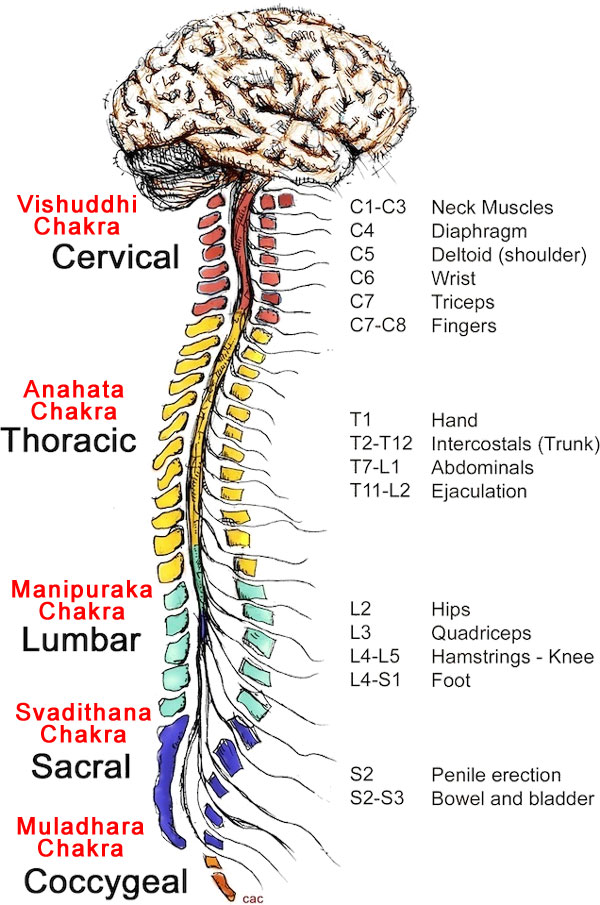
Sushumna Nadi
Sushumna nadi (red) is located inside the spinal column, co-existing within the same space as the spinal cord (spinal cord is the physical and sushumna is the numinous). It extends from the Muladhara Chakra to Brahmarandhra. Sushumna has inner layers to it. Within its inner wall is the Vajra nadi, then the Chitra, then the Brahma nadi. Kundalini's ascension is through the Brahma nadi.
Para-Sympathetic and Sympathetic System 51
On either side of the spine run the sympathetic (fight or flight response)and para-sympathetic cords (recover, heal, repair). The vasodilators are nerves expanding the arteries to carry more oxygen in the blood.
Ida and Pingala Nadis
Ida (feminine, moon, cooling) starts from the right testicle and ends on the left nostril, Pingala (male, sun, heating) from the left testicle and the right nostril. They meet at Muladhara chakra and form a knot with Sushumna nadi - Brahma Granthi.
Padmas or Chakras
Chakras are subtle and cannot be seen. They reside in the astral body. There is no consensus on the number of chakras - from 7 to 144. Chakras are energy wheels that spin. Every chakra has a different number of wheels - some call it # of petals on a lotus flower (psychics who see the human energy field but don't know yoga see an energy vortex where the chakras are - so they don't see a lotus flower with petals).
Muladhara Chakra and Kundalini
Muladhara Chakra is the earth element and lies at the base of the spine between the anus and genitals. It has 4 wheels representing 4 nadis branching off. LAM is the bija mantra of this chakra. Kundalini shakti and Brahma Granthi reside here. Siddhi in the Muladhara is Darduri siddhi (levitation, leaping far and high), transcending time (going to past and future).
Svadhisthana Chakra
This chakra is within the Sushumna nadi. It represents water element and the reproductive organ with the VAM bija mantra. It has 6 vermilion colored petals. He has control over water.
Manipuraka chakra
This represents the solar plexus, RAM bija mantra, 10 yellow petals and fire as its element. He can survive fire.
Anahata Chakra
Heart chakra, green color, 16 petals, YAM bija mantra, Nada sound is heard from a long Sirsasana. Siddhis are flying in the air and entering another person's body. He has mastery of air.
Vishuddhi chakra
At the base of the throat, ether element, HAM bija mantra.
Ajna chakra
Pure white color, OM bija mantra, located between the eye brows. Concentration here (Sambhavi mudra) gives rise to siddhis (becoming jivamukti, forgiveness of all past life karmas).
Brain
The brain is central to the nervous system. It is made with whitish soft matter. It floats inside the cranium through the cerebro-spinal fluid. It can be divided into 4 sections:
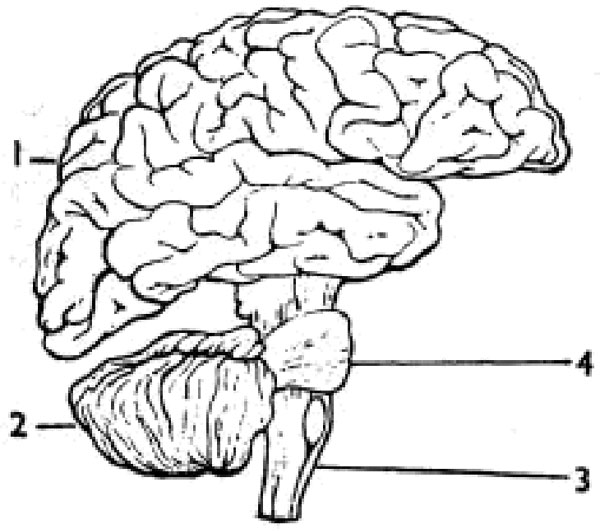
- Cerebrum - this is the biggest part of the brain. The pineal gland is here
- Cerebelum - the little hind brain for muscle movements
- Medula Oblongata - the spinal cord begins here
- Pons Varolii -
Brahmarandhra defined
Brahmarandhra translates to 'Brahma's opening', a small, subtle aperture at the fontanelle (an opening and not a chakra). This is the gateway of the soul upon death, gateway during OBE and gateway for a profound spiritual or mystical experience. This is NOT the Sahasrara. Sahasrara is a chakra located above the Brahmarandhra.
Sahasrara Chakra
Located at the crown of the head. When Kundalini reaches Sahasrara, the yogi experiences pure bliss, super conscious state and attains the highest knowledge. This is the highest of all the chakras with 1000 nadis.
Chapter 3: Awakening Kundalini
Purification
Kundalini can only be awakened when one has already purified himself - pure heart free of passion and desire. An impure man can force Kundalini awakening through asana, bandha, pranayama and mudra, but it's not ideal. It is best to awaken Kundalini through steady and gradual practice than force it. When Kundalini awakens, temptations abound and the impure cannot resist. It is essential to know the theories (chakra, kundalini, nadis, prana) before the actual awakening. No Samadhi is possible without Kundalini awakening. Awakening can be done in many ways - asana, pranayama, bandha, mudra by the Hatha Yogis, meditation by the Raja Yogis, Mantra chanting by the Tantrics, devotion by the Bhaktis, and knowledge by the Jnana-ist and by the guru through initiation. A mash-up also works. When kundalini awakens, it goes from chakra to chakra on the way to Sahasrara. When it reaches one chakra, it feels very hot. But when it leaves that chakra for the next, the former chakra feels cold and lifeless. Siddhis develop when Kundalini passes through every chakra.
It is easy to awaken Kundalini but it is very difficult to take it all the way up to Sahasrara. It takes perseverance and tenacity. A little Siddhi activation doesn't mean realization. Kundalini must reach Sahasrara. For body purification, the Shat Kriyas must be perfected.
- Dhauti - slowly take in a muslin cloth, 3' wide and 15" long. Let it stay 5 mins and slowly take it out. Drink milk. Do this progressively. You can practice once/week. This practice doesn't ony clean but heals many digestive ailments.
You can also drink water and pass it through the anus through Nauli and Uddiyana bandha.
Or you can drink a good quantity, do Nauli and vomit the water.
You can swallow air like swallowing food and pass it through the anus. You can live on air this way.
Other forms of Dhauti are cleaning teeth, scraping tongue, cleaning ears, etc. - Basti - Enema. You stick a tube inside your anus and draw water into it...then expel it out. Doing this this way gives you great control over your muscles. Another way is to inject water through a syringe.
- Neti - This clears the nostrils by taking salted water through one nostril and letting it run through the other nostril. This makes breathing easier and regular. Irregular breathing makes you sick.
- Nauli - Stomach churning from left to right while empty of air. It starts with Uddiyana bandha and then practice left to right and right to left in a wavy motion. Do this on an empty stomach. This is impossible to someone with a beer belly.
- Trataka 72 - gazing on a spot without blinking until tears run down. You can gaze on a wide open space or if with a view, gaze on a tree, a summit, and feel the body calm down. After the tears, close the eyes and imagine the same image (in my case, I simply do Sambhavi mudra). Eyesight improves and siddhis are developed.
- Kapalabhati - this is both a purification exercise and a pranayama. Inhale normally but on the exhale, force the air out with abdominal contraction. You can go as many as 120 breaths/round.
Prana
Prana is the life force within this universe. But we also have our own personal prana within. It lies in the heart. It performs 5 functions with specific locations and named according to function. Apana Vayu for elimination, Prana Vayu for respiration, Samana Vayu for digestion, assimilation and absorption, Udana Vayu for food/air intake and Vyana Vayu for all bodily functions. If you control breath through Pranayama, you control mind. Prana follows mind. So, to control prana, control breath. A person with a powerful personality is simply one who has immense prana coming out of him. Pranayama purifies the nadis. When nadis are impure, Kundalini cannot ascend. Pranayama triggers Kundalini arousal and ascension. There are many types of Pranayama.
Nadi Suddhi
The nadis should be purified for Pranayama to be effective - do the Shat Kriyas. Below are essential Pranayama specific to Kundalini awakening.
- Nadi Shodhana (Sukha Purvaka) - alternate nostril breathing with kumbhaka/bandha/mudra, ideally following the established ratios. Visualize the chakra and Kundalini awakening - this is important, perhaps the most important. This purifies the nadis, cures diseases and awakens Kundalini.
- Bhastrika - this is a rapid and forced inhalation/exhalation on the chest. Best to retain last in-breath and then slowly exhale.
- Surya Bhedan - inhale right, hold, Jalandara bandha, exhale left, repeat.
- UJjjayi - slow full breathing while constricting the air passage in the throat causing a slightly audible hissing sound. Kumbhaka/bandha/mudra on the in-breath hold is ideal.
- Plavini - in freediving, this is called 'packing'. Fully inflate the lungs and hold. With both nostrils closed, gulp and swallow air to the stomach (not lungs). Careful not to cause microscopic tears on the lungs if overinflated.
Pranic Healing
Pranayama can used to heal afflictions. To heal others, you transfer your prana to the afflicted. You will not deplete your prana since it will always be topped up by the cosmic prana (this is contrary to Krishnamacharya's statement that our personal prana is finite and we die when we deplete it...so conserve it).
On a patient, touch the afflicted area or organ, inhale, hold, kumbhaka/bandha/mudra, massage with message, "Cells, heal and be optimized for full functionality by order of the divine." and feel prana transmitted from the cosmic divine to the afflicted through you. You are the medium, not the healer. Do this to your body - your weary eyes, blacken your hair, remove wrinkles, etc. Practice makes perfect.
Distant Healing
You can heal from a distance but feel a direct connection to the afflicted. He should know the exact time and be open and receptive. He must have faith. Imagine quantum entanglement - you and the afflicted are entangled and directly connected and intensely woven.
Importance of Pranayama
Pranayama clears the cobwebs and the clutter like lifting the fog to see reality like it really is. With the veil lifted, the mind is clear and can be focused.
Benefits of Pranayama
The body becomes lean and strong. Fat is reduced. Semen is stabilized - the sex urge is controlled. The yogi becomes handsome. His breath is fresh as spring. His smell is enticing. The face has lustre. The eyes are fresh and vibrant. The mind has single-focus, ready for Dharana and Dhyana. Siddhis are achieved. Presence becomes radiant. Nada sound becomes more audible. Voice becomes sweet and melodious. Jathara Agni is amplified. Appetite is enhanced. Nadis are purified.
Instructions on Pranayama
Between 3-5 am, do washroom duties (gargle, scrub tongue, neti pot) and prepare for pranayama in a well ventilated room with no one to disturb you. Do not react on the breath-hold - no twisting of face. Remain calm even if there is panic in breath-retention. After practice, conserve your energy - talk less, eat only when hungry, limit interaction. Always include a mantra in the practice - OM is best. Don't push Pranayama to the point of fatigue - you should come out joyful and energized. If fatigued, then you pushed it too much. When you perspire during Pranayama, rub it through your body - do not wipe it with towel...Pranayama perspiration is valuable. If you are catching your inhale, then you held it too much.
Importance of Asanas
You should be able to hold either Padmasana or Siddhasana for a full hour without twitching - this establishes a one pointed focus of the mind. It helps to think, "I am firm as a rock." Ideally, you should be able to hold that seated pose for 3 hours. Don't switch seated poses - if Padmasana, then Padmasana.
Asanas for Kundalini Awakening
- Padmasana (full lotus) - sit on full lotus on Chin Mudra. This is most favored by ascendant yogis.
- Siddhasana - Siddhas prefer this pose. Siddhis are realized on this pose. For Nath yogis, there is no asana like Siddhasana
- Sirsasana (head stand) - this can be done up to 30 minutes but built it slowly. Breathe slowly. This redirects the vital seminal energy back to the top of the head, conserving Bindu. As you lengthen and refine the practice, the breath becomes finer and finer - you will notice. More blood goes to the head promoting clearer thinking. It is best to meditate after doing Sirsasana.
- Sarvangasana (shoulder stand) - I do this after Sirsasana. The sequence is: Sirsasana > Sarvangasana > Halasana > Pindasana > Matsyasana. I do equal time on Sirsasana and Sarvangasana.
This is considered a cure-all for all diseases. This adds elasticity on the cervical spine which aids in remaining young. This stretches the back in a unique and therapeutic way that affects the entire body. - Matsyasana (Fish Pose) - this must be done after Sarvangasana - they complement each other.
- Pashimottanasana (Seated Forward Bend) - keep the legs straight as you exhale coming down, straight back first, then do maha bandha mudra, then round the back and come down further to intensify the forward bend and keep holding the breath while engaging the bandha. Then release the bandha, straighten the back and inhale coming back up.
- Mayurasana (Peacock Pose) - this is a very detoxifying pose. It may even neutralize the bite of a venomous snake. This also removes affliction in the digestive system. This is not a beginner pose. Warm up the wrists first. Place a pillow in front of your face if a beginner - when you fall, your face hits the pillow and not the floor. Hold for even 3 minutes. Do this on an inbreath-hold.
- Ardha Matsyendrasana (Half Lord of the Fishes) - this provides an excellent torsional twist to enhance spinal mobility. This is good after Paschimottanasana. In its full expression, make sure the back is straight and not bent. Do the other side as well. This massages the digestive organs and aids in digestion.
- Vajrasana - this is ideal for a Mandukasana mudra. Sitting like this after a meal digests the food well.
- Urdhva Padmasana - inverted lotus pose, doing a shoulderstand or headstand but on full lotus. You get the benefit of both the headstand and padmasana
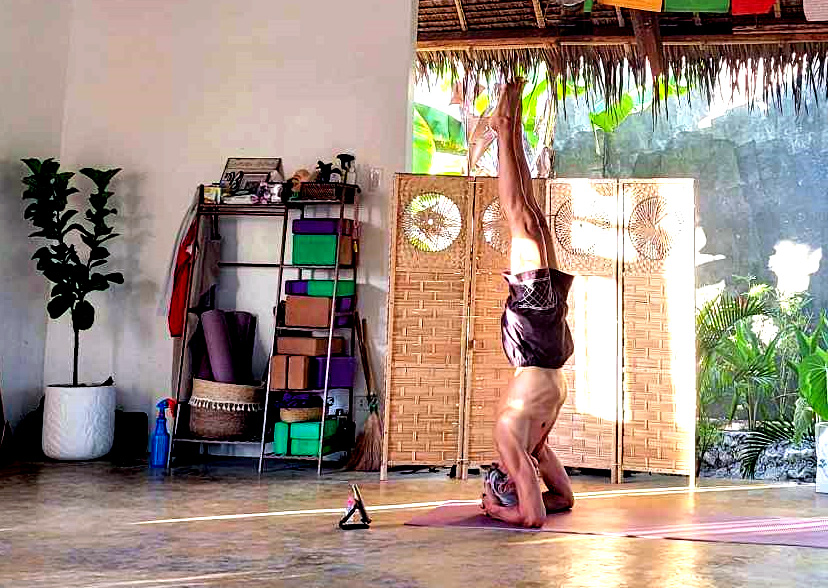
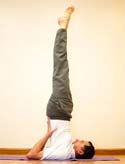
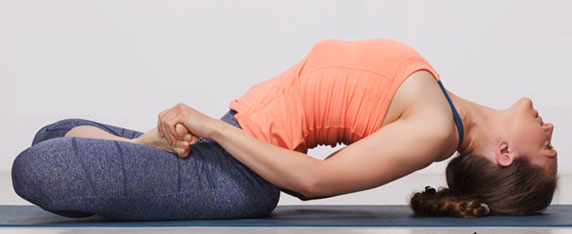
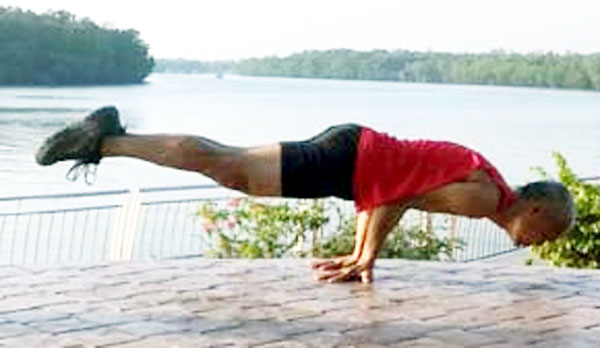
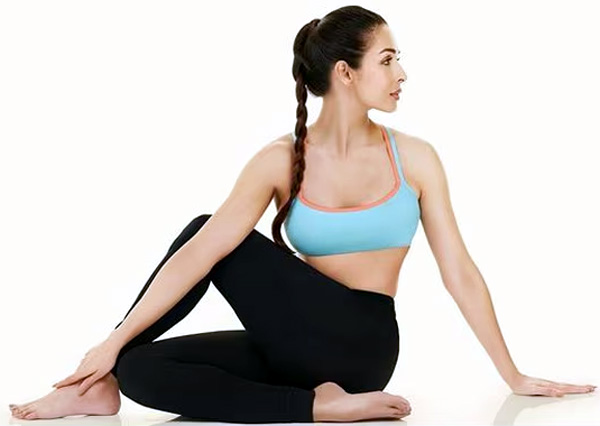
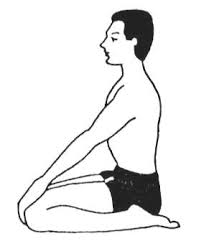
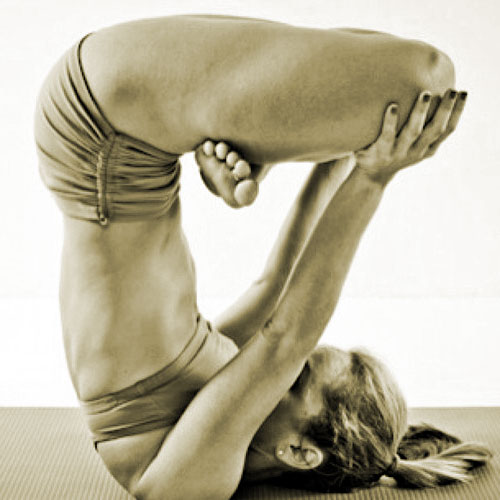
Asana
Perfect the Asana first before going into Pranayama - there is a reason why the 8 Limbs of Yoga is chronological. Practice regularly and not in irregular spurts. Asana is best in the morning on an empty stomach (between 3 am to 5 am). Don't force an Asana you're not yet ready for - be patient and you'll get there at some point. If you force it, you injure yourself. It means you don't get it - you're full of ego. Chose Asanas consistent with your person - don't be rigid about what the 'book' said. Asana, diet and meditation give good results. Doing long asana or long meditation without mental focus is useless - the mind has to be there at all times. Yoga practice in an open air, in nature, by the beach, by the river bank, by a mountain with a good view is ideal. If you had been practicing yoga for a bit already and you're still sickly, then there's something wrong with the practice.
Mudras and Bandhas 98
Mudras and Bandhas hasten the awakening of Kundalini. 2 or even 3 bandhas and mudras can be combined to give the most benefits. Contracting the perineum (ideally with the left heel on the perineum) pushes the Apanu Vayu up. This is half of the process. The other half is pushing Prana Vayu down through Uddiyana Bandha. When Apana and Prana Vayu meet at Muladhara chakra, heat is generated and Kundalini is awakened. Awakened Kundalini means you hear nada sound, Bindu flows, prana ascends to the Sahasrara and unite with consciousness, siddhis are activated. But Kundalini takes a lot of practice to awaken - don't expect anything on the first few tries. Siddhis are activated by Mudras and Bandhas (if you want strength and health, do your Asana and Pranayama. If you want Siddhis, do Kumbhaka, Bandha and Mudra).
Jalandhara Bandha
The chin is pressed against the chest while doing a breath-hold. This modulates the flow of Amrita.
Uddiyana Bandha
Uddiyana Bandha pushed down the upward movement of Prana Vayu. Prana Vayu then meets with Apana Vayu (through Mula Bandha) at Muladhara Chakra and generates heat (jhatara agani). Uddiyana Bandha is the first step in Nauli Kriya. The combined Uddiyana Bandha and Nauli are synergistic and provides a powerful cure to any kind of digestive ailment. This is more powerful than any digestive medicine. Combining Jalandhara Bandha, Mula Bandha and Uddiyana Bandha is called Maha Bandha Mudra or Bandha Traya - this is the most powerful combination of bandhas. Uddiyana Bandha reduces belly fat.
Maha Mudra 100
This is one of the powerful mudra - left heel on the perineum, righ leg a little wider and straight. Bend forward to hold the toes and on the inhale, Jalandhara Bandha, gaze on the 3rd eye and hold. Repeat on the other side (there are many variations of Maha Mudra, but all say the same thing that this mudra is very powerful. I have aggregated all the styles into this: left heel on the perineum, right leg wider and straight. Inhale while upright and come down on a forward bend on the exhale. When lungs are empty, do Maha Bandha Mudra while holding on to the right toes. Hold the breath whild maintaining the bandha. Release the bandha and slowly come up on the inhale until the back is straight while still holding on to the toes. Hold that inhale, lean back to make the back flatter, tilt the head back, tongue on the soft palate, eyes closed by drishti on the 3rd eye, Mula bandha and Uddiyana Bandha. Hold and engage the bandha. Release. Do the other side. Repeat 3X.).
MAHA BANDHA Mudra
Left heel on the perineum, right leg on ardha padmasana. Mula bandha + Jalandhara Bandha. (my version is stronger, via Krisnamacharya. Siddhasana on Chin Mudra. Inhale, hold, Jalandhara-Mula-Uddiyana Bandha, Nabho mudra, Sambhavi mudra). All 3 bandhas are engaged on the breath-hold. I might do this while doing a 1:4:2:3 Pranayama ratio.
MAHA VEDHA Mudra
While in Padmasana on an inbreath-hold with Maha Bandha Mudra, lift the body by pushing the palms against the floor and strike the floor with the pelvis on the way down. This activates the energy pump on the pelvic floor. This is the culmination of the Maha Mudra > Maha Bandha Mudra > Maha Vedha Mudra trilogy. In series, this is very powerful in awakening the Kundalini shakti.
YOGA MUDRA
This is my version. On Padmasana, do a forward bend, then arms could be on reverse prayer pose or cow-face.
VIPARITA KARANI MUDRA
This is essentially any kind of inversion - headstand, shoulder stand
KHECHARI MUDRA
This is extreme - you cut the tongue frenulum and pull the tongue. Eventually, the tongue becomes long and 'detached' from the lower jaw that you can insert the tongue all the way up the nostril cavity. This is considered the most powerful mudra. A lesser mudra is Nabho Mudra where you press the tip of the tongue on the soft palate closest to the nostril cavity - no need to cut the freneulum or pull the tongue out.
VAJROLI MUDRA
This is powerful and just as extreme as the Khechari Mudra. You insert a catheter inside your dick. Then using a straw inside your dick, you try to suck water in. Ultimately, you want to ejaculate inside a woman and then retrieve your sperm back doing this.
SHAKTI CHALANA MUDRA
Essentially, this is a combination of Maha Bandha Mudra and Nauli.
NOTES on Mudra and Bandha
Maha Mudra > Maha Bandha Mudra > Maha Vedha Mudra should be treated as one kriya in that order. Jalandhara Bandha > Mula Bandha > Uddiyana Bandha should also be treated as one kriya. Together they result in synergy.
LAYA YOGA
Laya doen't seem to offer anything unique. By its definition, it is yoga by absorption, essentially being single minded focus much like being in the last limbs of yoga or Samkaya. Nada is a state of absorption which could be done thru Nada sound, Trataka gazing, Mantra chanting, etc.
ANAHATA SOUNDS
These are in-audible sounds heard by the yogi during meditation. It's a sign that he is purifying his nadis and on his way to Kundalini awakening. One should listen to the subtler nada sound. When the mind hears the Nada sound, it latches on to it. You can hear any of the 10 Anahata sounds.
BHAKTI YOGA—CLASSES OF WORSHIP
There are many levels of worship - from the lowest (worship of elementals) to the highest form is the worship of (worship of Brahman). The goal of different types of yoga is the same but their means to it differ. The Hatha yogis reach their goal through asana-pranayama-kumbhaka-bandha-mudra. The Jnana yogis through knowledge and understanding the sacred scriptures. The Raja yogis through meditation. The karma yogis through selfless service. And the Bhati yogis through devotion. These different approaches can all be aggregated to achieve the goal faster.
MANTRAS 107
Kundalini can also be awakened by mantra. A guru can awaken a disciple's kundalini by chanting a mantra. A mantra can also be given to a disciple - this is a powerful mantra for the initiate. Mantras taken from a book is not that powerful.
SIDDHIS
Siddhis are superhuman powers that can be used when activated through Kundalini awakening. One can be as small as an atom, as big as the entire universe, as light as a feather, as heavy as a mountain, transcend time, space and dimension, control the 5 essential elements, create and destroy. These are the siddhis.
POWER OF A YOGI
A yogi is powerful. Through pranayama, he can control heat and the cold. He can sustain hardship without discomfort. Through Hatha Yoga, the yogi develops a perfect body and a single-pointed mind. He develops siddhis and reaches Samadhi. It is good to try many approaches to siddhi activation. There is no one-size fits all. Every practice affects a yogi differently. A real yogi hides or disavows his siddhis. A charlatan makes a livelihood of his siddhis. With siddhis, one can go back in time or forward into the future, neutralize a cobra's bite, know what leaves to cure an ailment, see astral entities, and stop your heart.
DHARANA (CONCENTRATION)
When one tries to keep focus on a meditation object, this is Dharana. The object of meditation doesn't have to be physical. He makes the effort, but the mind is still going places. Be established in Yama and Niyama to purify beginning to meditate. A man with many worldly desires cannot concentrate and will fail Dharana. One can practice Dharana on any of the chakras - activating the chakra awakens its energy. The mind will wander - bring it back. One who has mastered concentration can accomplish things in half the time. In concentrating, try to visualize everthing about the object. If meditating on growing new teeth, visualize the shape, colore, size, alignment, strength and bite of the new teeth. Think of its physical attributes and also its qualities. When you read an important book several times, you learn new things every single time - so keep going back to dense books you've read before.
Chapter 4: Yoga Addenda
Exalted Yogis
Yogic lore is full of miracles done by saddhus, siddhis, babas and yogis. If Christ did his miracles in India, he'd be just another guy. Sri Sadasiva Brahman was in samadhi when he was covered in mud from a landslide. He was accidentally discovered months later by agriculturists when they were digging. Sri Sadasiva simply came out of his Samadhi and walked away. Sri Jnanadev wrote a commentary on the Gita when he was only 14 - this remains one of the best commentaries to date. Sri Trilinga Swami lived for 280 years. Sri Gorakhnath came into being with Matsyendranath's blessings. His Siddhis were legendary. Swami Krishna Ashram lived naked in an icy region of the Himalayas. Yogi Bhusunda was the Pranayama master. He had control of all 5 elements. Tirumula Nayanar activated all 8 siddhis. When Mansoor's body was cut up into pieces, his flesh was still reciting the mantra. Milarepa would sleep in the air, have water and fire come out of his body. He subjugated gods and elementals to do his bidding.
Lights 120
Sometimes you will get very powerful during meditation, seeing white dazzling lights that come and go. With concentration, they can last 10 - 16 minutes. The lights could come from your mind or any of the chakras (In an interview, Wim Hof talked about these lights. He got bored with it and moved on). You see beings from the higher planes or objects from the astral realm. This scares some people who don't know what to do next. Ignore these. These could be a pigment of your imagination realizing these are what you expect. Or, they may be manifestations of subtler reality. But don't fool yourself into thinking you've arrived. You are not yet enlightened so don't stop your practice and begin preaching to people about 'spirituality'.
Elementals
During meditation, you might begin to see disembodied entities - they look horrible. They are Bhutas from Bhuvar Loka. Shiva loved to hang out with them. People with open 3rd eyes, see them and are horrified. But they are really harmless.
Life in the Astral Plane
As you deepen your practice, you might experience an OBE. You'll feel light and airy. You'll see glowing object and bright lights. You'll feel joy that is inexplainable. You'll also feel fear because everything is new and unfamiliar. With continued practice, you should be able to make this travel at will and stay up there for extended periods. You can take some materials from the astral realm and bring it to the default world. Once you master astral travel, it would be easier to do pranic healing, distance healing and other psychic powers (I met people from Siquijor who can at will, go to the astral plane. They describe it accurately the way this book does...that objects seem to glow. But they add that food is much better and the place is so much nicer that this default world would look like a ghetto in comparison).
Hints on Yoga
Sexual expression should be put in check. This is a slippery slope. An ejaculation will waste precious matter and energy. Be cautious and prudent. You can have sex but don't release. Do Maha Bandha Mudra instead before you reach the point of no return.
Filter out things that put burden or baggage. Avoid loud and negative people. Avoid gossip. Read inspiring books about people you admire. Hang out with positive or like-minded people. Observe tapas. Talk only when it's needed. Talking takes too much energy. Conserve your energy. You might reach a point when you have to choose between becoming a muni or remain a householder. These 2 do not usually mix well - it's a compromise at best.
Don't be angry, or lose control. Anger means you haven't mastered your emotions yet. Drink lots of water in the morning and exercise. Eat veggies instead of meat. Spare the animals the cruelty. To immediately neutralize charged emotions or thinking, chant a mantra. There is no siddhi without purification - so master the Shat kriyas. If the initiate is gloomy and down, there must be something wrong in the pracice. Take the proper steps and be patient with your progress, even if slow - no shortcut or you end up half-baked.
When Kundalini happens for the first time, these are the short-term symptoms: bliss, tremors (I've had these after extreme breath-holds), lightness of being, spiritual intoxication, fainting and sleep. When siddhis develop, do not stop your practice and prance around like some divine shithole. Continue your practice and don't let the siddhis get inside your head. When you are ready, a guru will come - no need to look for him. Being in a less-than-ideal place for yoga (Tagbilaran) should not deter you from practice nor should it trigger you. Practice! Don't use any excuse for missing out on your practice. When Kundalini awakens, it doesn't go straight up Sahasrara. It ascends slowly, chakra by chakra. Even when it reaches Sahasrara, it can drop down back to Muladhara chakra. Young boys should not take up advanced yoga - their minds are still all over the place.
Some Practical Hints 130
Yoga Kundalini Upanishad
Chita, Samskara, Vasana
Of the 108 Upanishads, the Yoga Kundalini Upanishad is the 86th. It explains how Chita works (the mind with its memories, thoughts, impressions, and experience). The mind is influenced by Samkaras (deep mental impressions from the past), Vasanas (deeply rooted desires caused by Samskaras. e.g. if the Samkara is generosity, the resulting Vasana is to help others) and Prana (energy). The Chita is like a fertile soil. Samskaras are like seeds. Vasanas are like germinated seeds. By controlling Prana, we control Vasana (desire) - don't control your desires, you cannot. Control Prana instead. We can control Prana by Mitahara (sound diet), Asana and Shakti Calana (Maha Bandha Mudra) (the more specific way to control Prana is by Pranayama, Bandha, Mudra and Kumbhaka). All types of Pranayama give benefits - practice them all even the obscure ones like Shitali and Sitkari. These breathing practices pierce through the Granthis, generate heat awakening Kundalini, triggers the flow of Amrita.
Now in Kali Yuga, there may be less gurus but when the student is ready, he will come. A guru clears the way from all the obstacles an aspirant will experience otherwise. From An Autobiography of a Yogi, it is clear how a guru can exponentially hasten and deepen the practice of an initiate. Without a guru, you're blind as a bat navigating in the dark. But without a guru, the established books in Yoga is the next best thing. The Hatha Yoga Pradipika is the most comprehensive from all I've read.
Another way to awaken Kundalini is by breathing in equal ratio. Usually, the exhale is longer. Use a metronome while doing Pranayama to ensure equal ratio between inhale and exhale. Do this for 45 mins.
Chita and the Control of Prana 137
Chita, Samskaras, Prana and Vasana are correlated. Controlling one controls the rest (in my practice, I control the breath instead through Pranayama. Controlling breath is to control Prana. Controlling Prana controls the Chita, Samskaras, and Vasana. Breath is key).
Mitahara, Asana and Shakti-Chalana
You can control Prana as well through Mitahara, Asana and Shakti-Chalana. Diet plays an important role in Kundalini awakening...not just the upward dogs and mudra/bandah. Kundalini rising from Muladhara to Sahasrara, passing through all the major chakras while doing Nauli is called Shakti-Chalana.
NOTE: I didn't read the last 20 pages. It seemed like a waste of time because it's a repeat of what I already know. I don't think I learned anything new from this book.
Ending Thoughts
Guru
The book relies heavily on the guidance of a guru. But in this day and age, where do you find a qualified guru? I'd been to Rishikesh and found a swarm of 'gurus' each preying on any newcomer who seemed lost and looking for themselves - that's already Rishikesh! Where do you go?
Aggregating lessons for this book
I have to default once again to my practice. The ascendant yogis of old have codified their protocols on profound and powerful yogic practices to awaken kundalini. I will simply add whatever I gleaned from this book, to my ongoing practice and see where it leads me.
Not the whold deal
Halfway through this book, I realized that this is just an abbreviated version of the more comprehensive Hatha Yoga Pradipika - there isn't anything new here. I don't recommend this book. Read Hatha Yoga Pradipika instead.
Homily
Much of the narration is homilistic - like a grandfather doting with his aphorism to his grandchildren. My push back on that is to write my summary/interpretation in pedestrian parlance to underscore relevance to this day and age, "Stop becoming a preacher the first time you feel a tremor during kumbhaka."
Abstract Language
"The Jivatma in the subtle body, the receptacle of the five vital airs (Pancha Pranas), mind in its three aspects of Manas, Buddhi and Ahankara; the five organs of action (Karmendriyas); and the five organs of perception (Jnanendriyas), are united with the Kula-Kundalini." Had it been said in plain English, the passage would have been useful. Instead, it just occupied space. The book is full of such language.
Repetition
There are too many repetitions of the same teaching, sometimes verbatim, sometimes in a slightly different language, but all the same just the same.
--- Gigit (TheLoneRider)
YOGA by Gigit ![]() |
Learn English
|
Learn English ![]() |
Travel like a Nomad
|
Travel like a Nomad ![]() |
Donation Bank
|
Donation Bank ![]()
Leave a comment?
Next story:

![]()

![]()
Beginner Yoga at Fox and Firefly
(December 13, 2024) Joan has been keeping me in mind whenever there's a need for a yoga teacher at her resort in Loboc, Fox and Firefly. I try not to disappoint the newbies and inspire them to pursue the practice after the session....more »»
»» back to Yoga
»» back to Book Review
»» back to Homepage
ARCHIVE 2025:
JAN |
FEB |
MAR
1970 |
1973 |
1975 |
1976 |
1977 |
1979 |
1981 |
1996 |
2000 |
2001 |
2002 |
2003 |
2004 |
2005 |
2006 |
2007 |
2008 |
2009 |
2010 |
2011 |
2012 |
2013 |
2014 |
2015 |
2016 |
2017 |
2018 |
2019 |
2020 |
2021 |
2022 |
2023 |
2024 |
2025 |
ALL BLOGS

